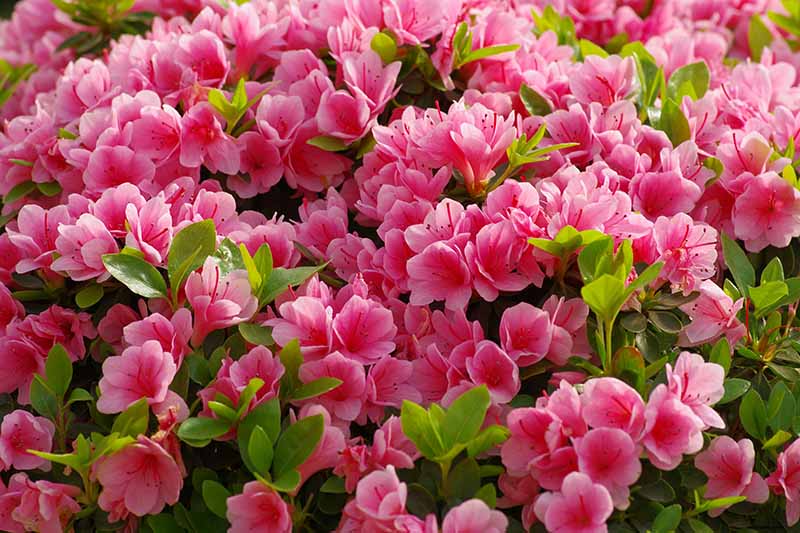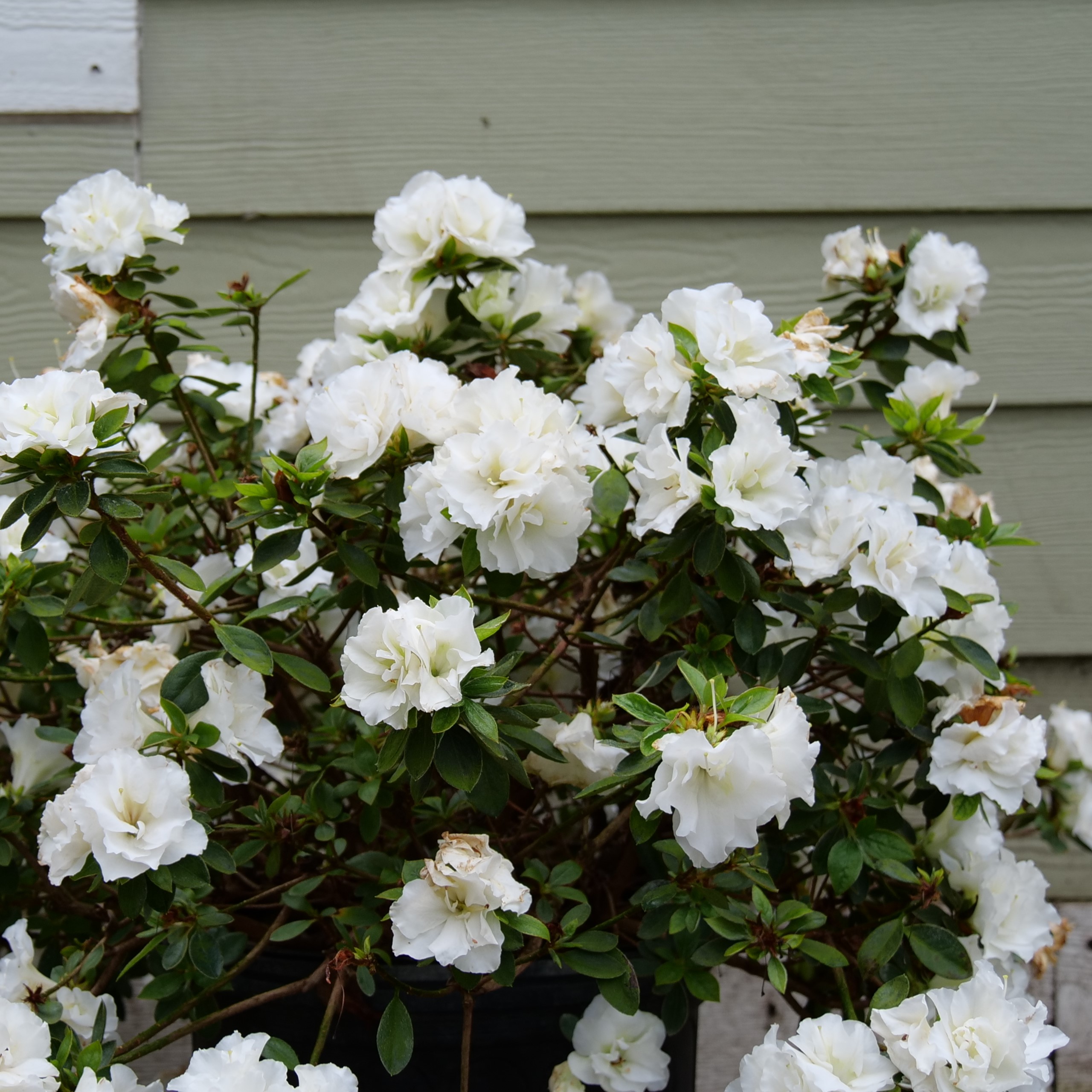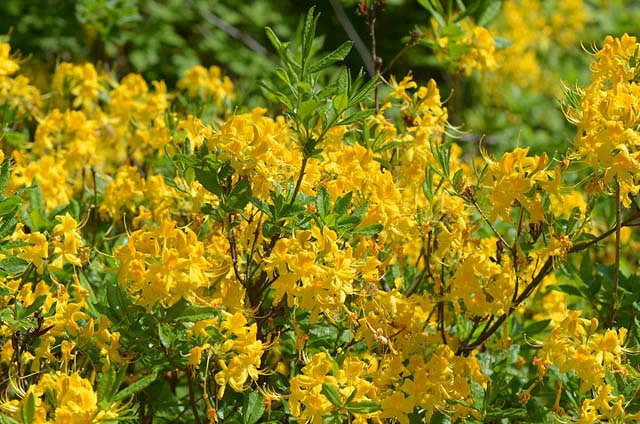How To Grow Azaleas As Perennials
Azaleas are beautiful flowering shrubs that can add a touch of elegance to any garden. They come in a wide variety of colors, from bright pinks and reds to delicate whites and blues. And with proper care, azaleas can thrive for many years as perennials.
In this blog post, we will discuss the basics of growing azaleas, including:
- Choosing the right location
- Preparing the soil
- Planting azaleas
- Caring for azaleas
- Dealing with pests and diseases
By following these tips, you can enjoy beautiful azaleas in your garden for years to come.
Choosing the Right Location
The first step to growing azaleas is choosing the right location. Azaleas prefer partial shade, so avoid planting them in full sun. They also need well-drained soil, so avoid areas that are prone to flooding. If your soil is not naturally acidic, you may need to add some peat moss or other acidic amendments.
The best time to plant azaleas is in the spring or fall, when the weather is mild. When planting, dig a hole that is twice as wide as the root ball of the azalea plant. Backfill the hole with a mixture of native soil and peat moss. Water the azalea well and mulch around the base of the plant to help retain moisture.
Preparing the Soil
Azaleas prefer acidic soil with a pH of 5.5 to 6.0. If your soil is not naturally acidic, you can add some peat moss or other acidic amendments. You can also test the pH of your soil using a pH testing kit.
To prepare the soil for planting, dig a hole that is twice as wide as the root ball of the azalea plant. Backfill the hole with a mixture of native soil and peat moss. Water the azalea well and mulch around the base of the plant to help retain moisture.
Planting Azaleas
The best time to plant azaleas is in the spring or fall, when the weather is mild. When planting, dig a hole that is twice as wide as the root ball of the azalea plant. Backfill the hole with a mixture of native soil and peat moss. Water the azalea well and mulch around the base of the plant to help retain moisture.
Caring for Azaleas
Azaleas are relatively easy to care for, but they do require some basic care. Here are some tips for caring for azaleas:
- Water regularly, especially during hot, dry weather.
- Apply a balanced fertilizer once a month during the growing season.
- Mulch around the base of the plant to help retain moisture and suppress weeds.
- Prune azaleas in the spring to remove dead or damaged branches and to shape the plant.
Dealing with Pests and Diseases
Azaleas are susceptible to a few pests and diseases, but they are generally not too difficult to treat. Here are a few common pests and diseases to watch for:
- Aphids: Aphids are small, soft-bodied insects that suck the sap from plants. They can cause leaves to wilt and curl. To control aphids, you can spray the plants with insecticidal soap or neem oil.
- Scale: Scale insects are small, oval-shaped insects that attach themselves to the stems and leaves of plants. They can cause leaves to turn yellow and drop off. To control scale insects, you can scrape them off the plants with a dull knife or insecticidal soap.
- Root rot: Root rot is a fungal disease that can cause the roots of azaleas to decay. This can lead to wilting and leaf drop. To prevent root rot, plant azaleas in well-drained soil and avoid overwatering.
Conclusion
Azaleas are beautiful and easy-to-care-for flowering shrubs that can add a touch of elegance to any garden. By following the tips in this blog post, you can enjoy beautiful azaleas in your garden for years to come.
Azaleas are beautiful perennial flowering shrubs that can add a touch of elegance to any garden. They come in a wide variety of colors, including pink, purple, red, white, and yellow. Azaleas also bloom for a long period of time, typically from spring to early summer.
If you're thinking about adding azaleas to your garden, there are a few things you need to know. First, azaleas prefer acidic soil with a pH of 5.5 to 6.5. They also need to be planted in a location that receives partial shade. Too much sun can scorch their leaves and flowers.
Azaleas are relatively low-maintenance plants, but they do need to be watered regularly, especially during the spring and summer when they are actively growing. You should also fertilize them once a month with a fertilizer that is specifically designed for azaleas.
If you're looking for more information about azaleas, I recommend visiting Garden Wiki. This website has a wealth of information on azaleas, including how to grow them, how to care for them, and how to choose the right variety for your garden.
FAQ of azalea perennial
- Are azaleas perennial plants?
Yes, azaleas are perennial flowering shrubs that can live for many years. They typically bloom in the spring, but some varieties can bloom in the fall or winter.
- What are some important facts about azaleas?
Here are some important facts about azaleas:
* They are a popular shrub in landscaping, with over 1,000 varieties.
* They can be evergreen or deciduous, depending on the variety.
* They prefer acidic soil and partial shade.
* They need regular watering, especially during the flowering season.
* They are susceptible to a number of pests and diseases, so it is important to monitor them regularly.
- How do I plant azaleas?
Here are the steps on how to plant azaleas:
1. Choose a location that receives partial shade and has acidic soil.
2. Amend the soil with peat moss or pine bark to make it more acidic.
3. Dig a hole that is twice as wide and as deep as the root ball of the azalea.
4. Place the azalea in the hole and backfill with soil.
5. Water the azalea thoroughly.
6. Mulch around the azalea to help retain moisture and suppress weeds.
- How do I care for azaleas?
Here are some tips on how to care for azaleas:
* Water regularly, especially during the flowering season.
* Fertilize with an acidic fertilizer once a year in the spring.
* Prune in the spring to remove dead or diseased branches and to shape the plant.
* Protect from pests and diseases.
- What are some common problems with azaleas?
Here are some common problems with azaleas:
* Root rot: This is caused by overwatering. The roots will turn brown and mushy, and the plant will eventually die.
* Leaf spot: This is a fungal disease that causes brown spots on the leaves. The leaves may eventually fall off.
* Aphids: These small insects suck the sap from the leaves, causing them to wilt and turn yellow.
* Scale insects: These small, hard-shelled insects attach themselves to the stems and leaves of azaleas, sucking the sap.
Image of azalea perennial
5 different images of "azalea perennial" from pinterest.com:





Post a Comment for "How To Grow Azaleas As Perennials"